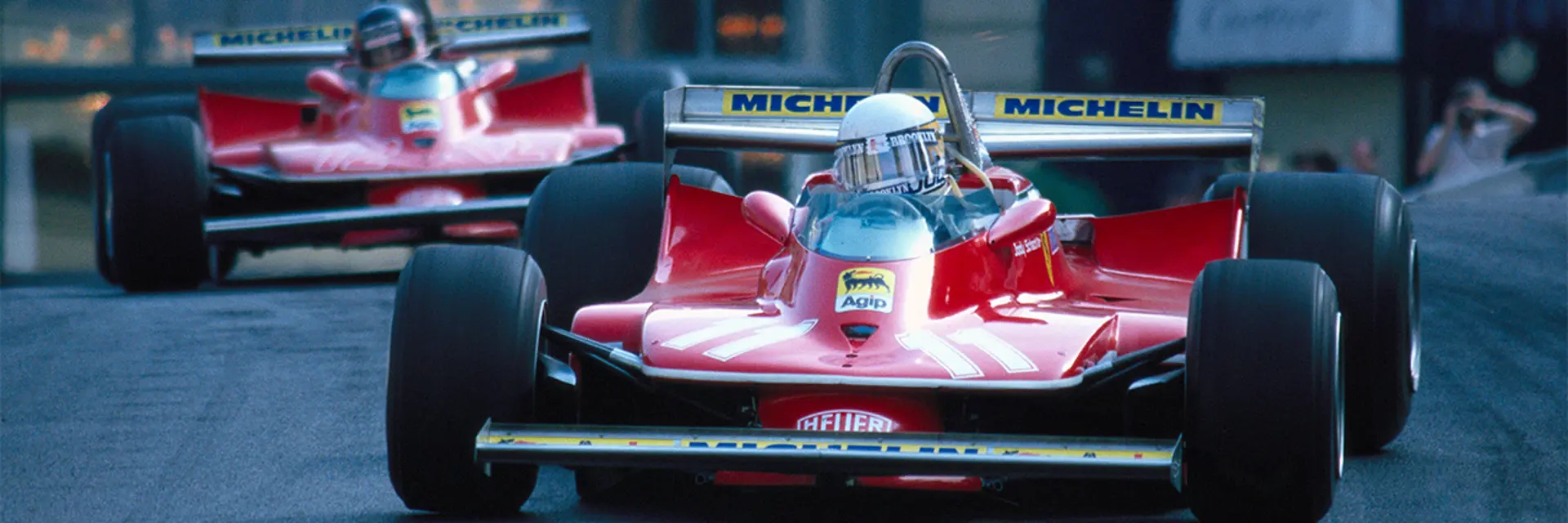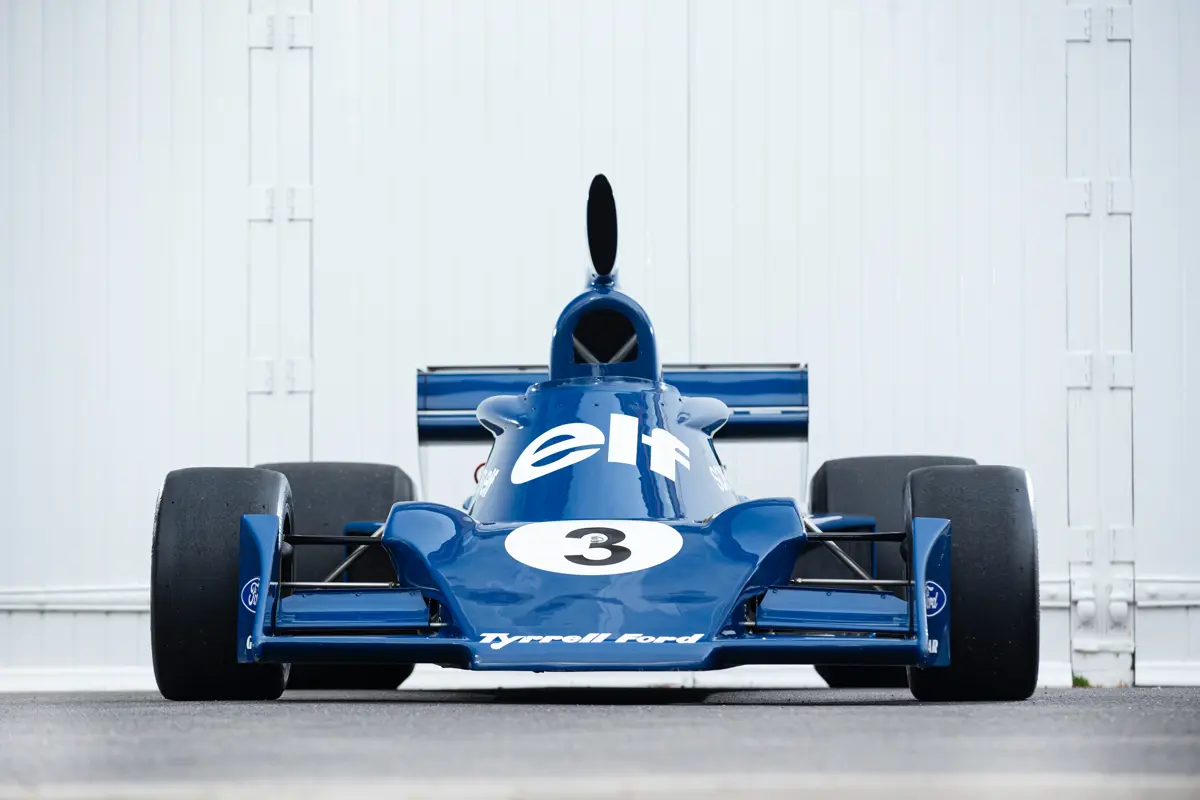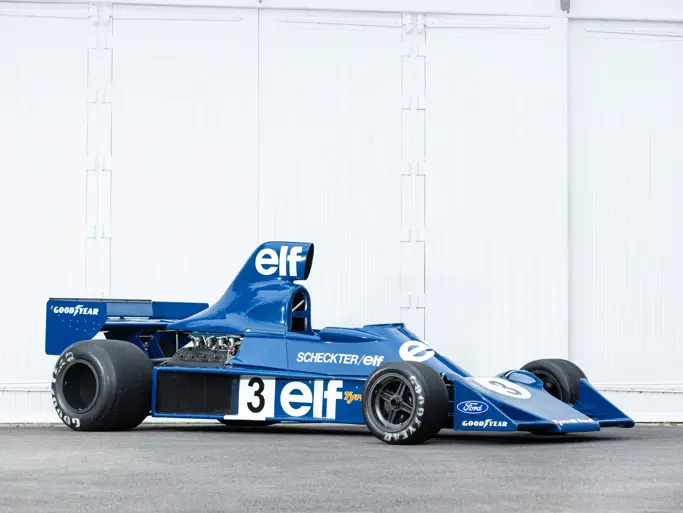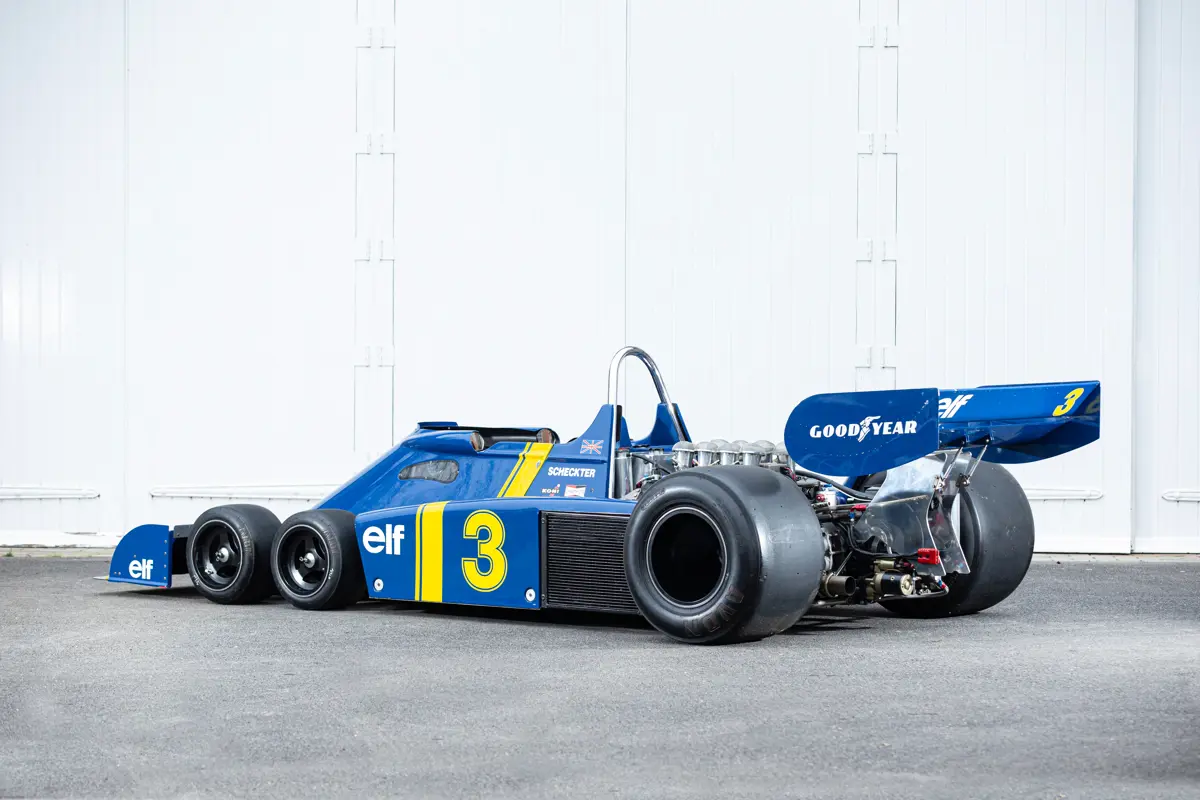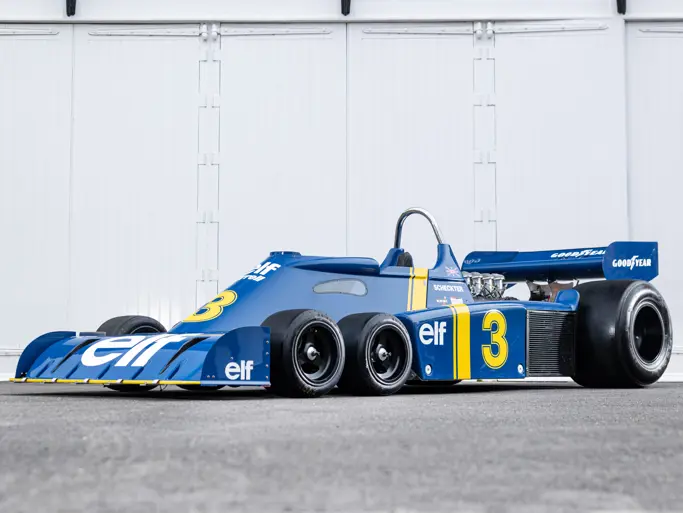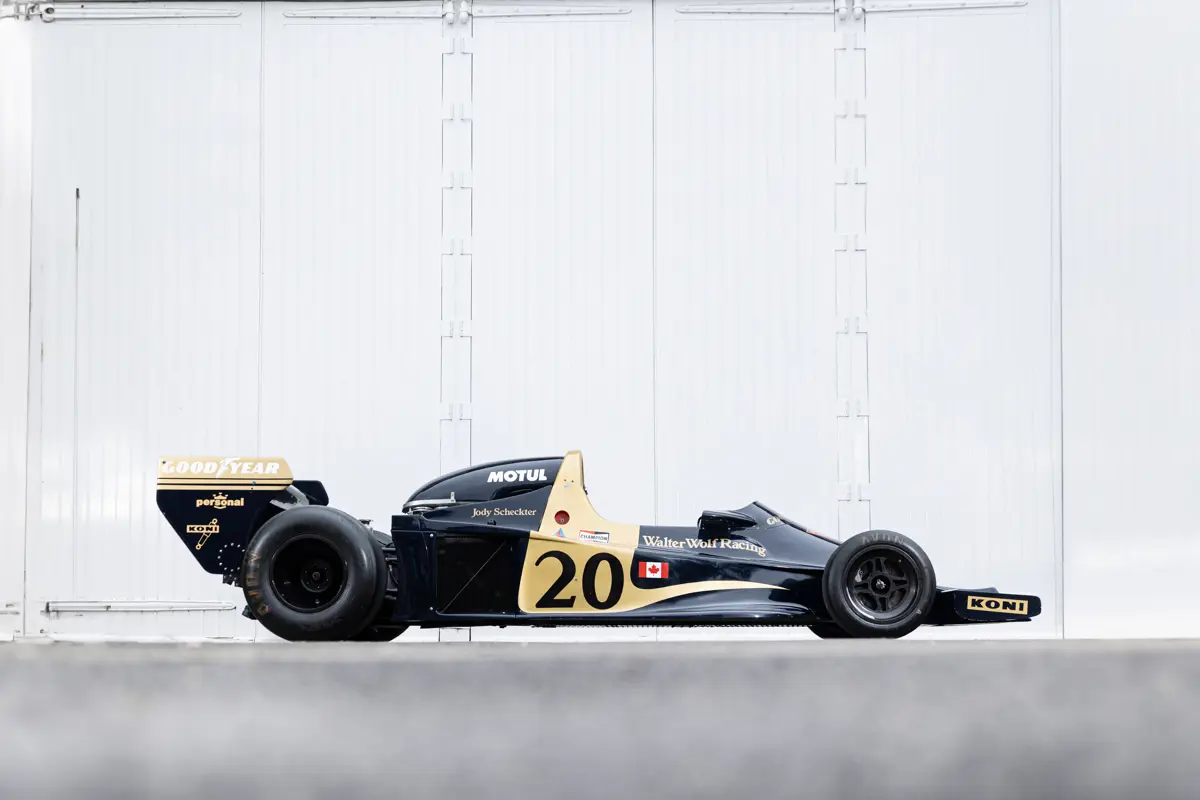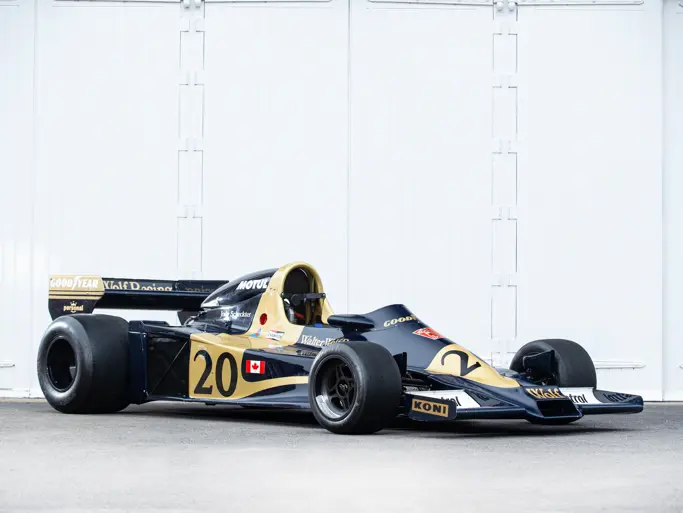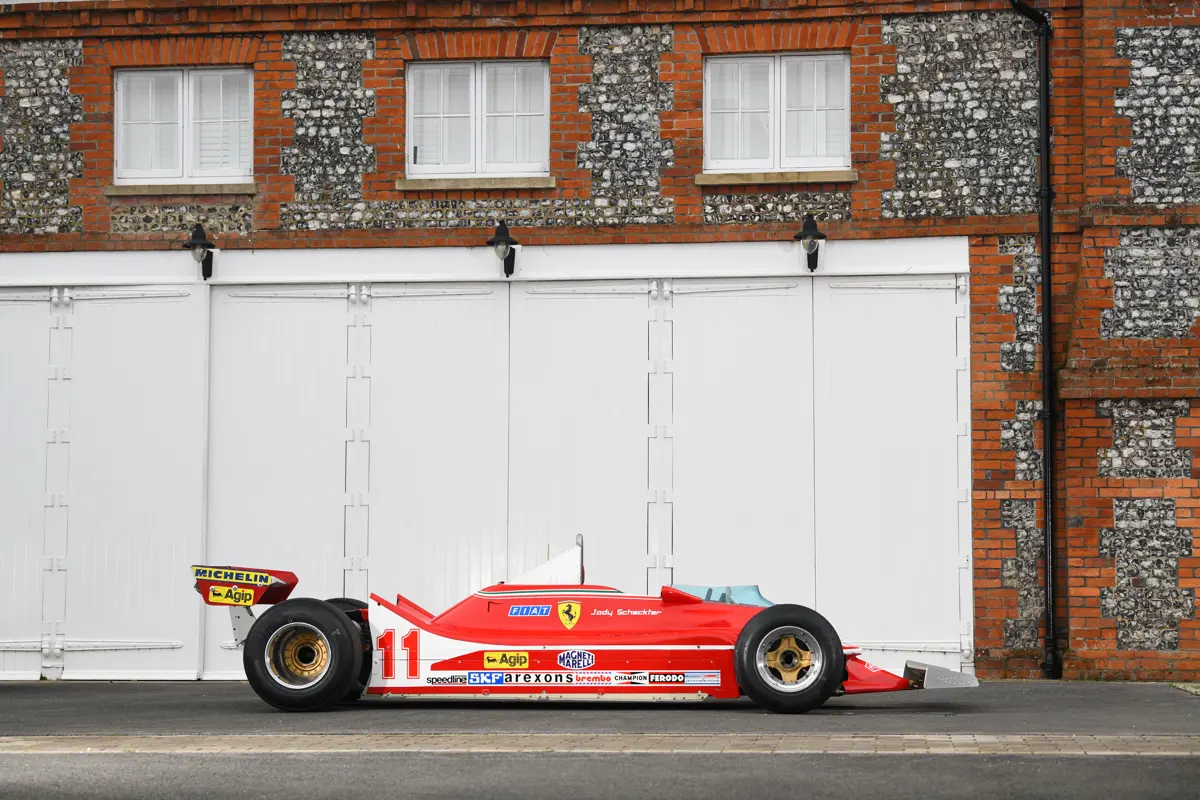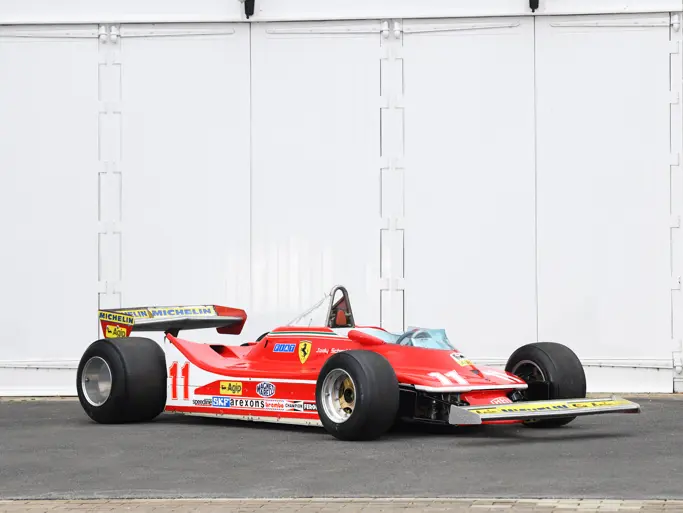Jody Scheckter’s Formula 1 career spanned some nine seasons and included stints at four of the sport’s most iconic teams—McLaren, Tyrrell, Wolf, and Ferrari—and drives in some of the most legendary machines of the 1970s. A true character and mercurial talent, the path to success was not always smooth for the South African, though ultimately he would win the top prize, becoming a Maranello legend and writing his name into the annals of motorsport history. Join us for a flat-12-powered scream down memory lane…
First Top-Flight Victory
Scheckter had been a fixture in Formula 1 since 1972 and had come within an ace of winning just his third-ever grand prix in 1973 before a crash put an end to his chances, but the South African’s first top-flight victory wouldn’t come until a year later. Now racing for Tyrrell, Scheckter was given his first full-time drive and took full advantage of the opportunity. Not only did he score points in eight consecutive races—a remarkable achievement given his experience—he also finished 3rd in the Drivers’ Championship thanks in part to his first-ever Formula 1 win, at the 1974 Swedish Grand Prix.
The South African put in a committed performance, qualifying in pole position ahead of his teammate and the Ferraris of Niki Lauda and Clay Regazzoni, before going on to dominate the race proper. Things may have been different had the race gone on for much longer, given the rate at which both Niki Lauda and James Hunt were closing in the dying stages, but Scheckter held on to finish less than half a second ahead of teammate Patrick Depailler, and just over three seconds from Hunt, who scored Hesketh’s first points finish in Formula 1.
There’s No Place Like Home
Outside of winning around the streets of Monte-Carlo, there are few prizes greater in Formula 1 than a driver taking victory in their home grand prix. Jody Scheckter managed that feat in 1975 while driving a Tyrrell 007, becoming the first-ever South African to win the blue riband event—but it wasn’t plain sailing.
Practice for the race proved a gruelling affair, with Graham Hill, Guy Tunmer, and Niki Lauda all crashing out—the latter at over 120 mph. Scheckter also came off the track, which was deemed so dangerous that practice was stopped until modifications were made to the fencing.
When the flag finally dropped, Scheckter made a strong start behind the Brabhams of Carlos Pace and Carlos Reutemann, quickly overhauling the Brazilian after just three laps. He held on in front of his home crowd, resisting a late charge by the Argentinean to take a famous win on home soil.
Six Appeal
Derek Gardner’s radical Tyrrell P34 is one of the most recognisable and outrageous designs to ever compete in Formula 1. The ingenious machine ditched conventional front wheels in favour of a six-wheeled design that allowed the four front wheels to tuck behind the front wing, significantly reducing drag, increasing top speed, and allowing cleaner airflow to the rear wing. The car was unveiled at Heathrow in 1975, shocking the public and pundits alike as the tarpaulin was pulled to reveal the unique wheel setup.
The P34 was campaigned by Jody Scheckter and Patrick Depailler throughout the 1976 season, proving particularly well suited to smooth, high-speed circuits where the Tyrrell’s maximum velocity offered the greatest advantage over the competition. It was less effective on bumpier tracks, where its forward four wheels could struggle for grip.
The Tyrrell P34’s greatest moment came at the 1976 Swedish Grand Prix, when Jody Scheckter and teammate Depailler took a convincing 1-2 victory ahead of the Ferrari 312 T2 of Niki Lauda. The race would mark the sole victory for one of the most iconic machines in motorsport and following a poor 1977 season, the design was abandoned and later outlawed.
Fighting Off King Rat
After the disappointment of the 1976 season and the trials of the controversial six-wheeled P34, Jody Scheckter abandoned Tyrrell in favour of Walter Wolf Racing for 1977. Incredibly, Scheckter delivered the team victory in the first race of the season, later finishing on the podium in South Africa, the United States, and Spain, before heading to Monaco for a tilt at the jewel in the Formula 1 crown.
Starting from the front row, Scheckter got a dream start, beating pole-sitter John Watson to the first corner. Watson gave chase for more than half the distance before being forced to retire with gearbox trouble, opening the door for Ferrari’s Niki Lauda. Under relentless pressure from the Austrian, Scheckter stood firm, putting in a stellar performance and bringing his Wolf WR1 home in 1st position.
Sadly for the South African, his form, nor his car’s reliability, held until the end of the season. His Wolf’s engine gave out at Zolder, Silverstone, and Monza, while a crash put him out of contention at the Scandinavian Raceway. After finishing 3rd at Watkins Glen, Scheckter’s title hopes had been dashed.
Becoming a Champion
After two seasons with Walter Wolf Racing, Scheckter secured a seat at perennial front-runners Ferrari for 1979, and with it a drive in the Scuderia’s new ground-effect 312 T4. The car finally made its debut in South Africa following two lacklustre opening rounds in the outgoing 312 T3. It immediately made its mark, delivering a 1-2 victory for Ferrari at both Kyalami and Long Beach. Hugely capable and uncommonly reliable, the 312 T4 suffered just one mechanical failure in the whole season and allowed Scheckter and Gilles Villeneuve to remain fiercely competitive throughout.
Scheckter’s season came to a head at the 1979 Italian Grand Prix at Monza. After taking an early lead, he was quickly overhauled by the turbocharged Renault of René Arnoux, who remained out in front until the 13th lap, when a stuttering engine allowed Scheckter to regain the lead. Further mechanical maladies affected the chasing pack, but the Ferrari soldiered on, maintaining its 100 percent reliability record to that point and carrying the South African to a famous win. Not only did he win the grand prix, he also won the Drivers’ Championship, while Villeneuve’s 2nd place finish helped secure the Constructors’ Championship.
The Scuderia wouldn’t win another Formula 1 Drivers’ Championship for more than 20 years, and Scheckter would never again reach such heights, retiring from the top-flight of motorsport at the end of the following season. The car, meanwhile, was purchased by Scheckter from Ferrari in November 1982, and has remained in the driver’s personal collection, frozen in time, ever since. That very car is set to cause a sensation when it is offered at public auction in Monaco on 10-11 May, along with other motoring highlights from Scheckter’s glittering career.

